#power of St Benedict medal
Text
youtube
Priest and Exorcist Fr. Blount

Saint Benedict Medal
#Fr Blount Priest and Exorcist#saint benedict#power of St Benedict medal#true events#power against evil#modern day miracles#the power of prayer#the more you know#blessing#st benedict#Fr Blount#christian motivation#christianity#prayers
18 notes
·
View notes
Text
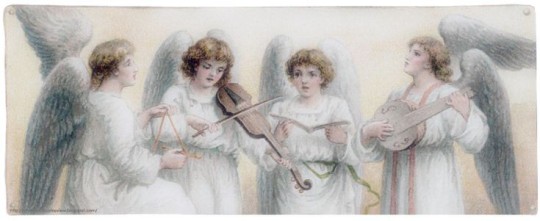
Things to help you when caught up in Spiritual Warfare 🎀
~Carry or wear a St. Benedict medal
~Pray to the Lord for his assistance
~Write down psalm 145 and 64 on a piece of paper to keep with you everywhere you go.
~Carry blessed salt with you
~Read the bible
~Call upon St. Micheal to help you
~Wear obsidian or black onyx and ask the Lord to bless it with his protective power
~Wear a pentagram with the remembrance that it is the star of Jesus's sacrifice and that it banishes evil.
~Listen to music from Mass. Evil spirits dislike that type of music.
~Pray the rosary
~Keep a reminder that Satan and his demons only gain power through lies. Do not fall for their trickery.
#folk catholicism#catholic witch#christian witch#godlovesyou#god#jesuschrist#witchcraft#witchy#catholic
19 notes
·
View notes
Text
Saint Benedict For Protection With Bath Ritual & More.

If you need help protection yourself or your loved ones from evil and danger, You call upon Saint Benedict for help.
Who was Saint Benedict? Saint Benedict of Nursia. He was the son of a noble family, and founder of the Benedictine monastery , he went and founded twelve monasteries. When he was a young man, his family sent him to Rome for studies then went on to become a monk.
To Christians St. Benedict is proclaimed as the patron saint of Exorcisms. The Medal is recognized by the Church as a powerful symbol and weapon of protection and liberation against curses and evil influences which when used evil can't stand looking at it. (it's the one saint I would use against evil) Using this medal with prayer is powerful for removing evil as well as preforming with exorcisms. He is also the patron saint of Fields and Farmers.
Petitioning Saint Benedict. When you need protection from evil or the effects of temptation, Light a white candle and dressed around the wick with a dab of Angelica Oil (I use Holy Oil). Sit peacefully, and clear your mind. When you are ready, say his prayer. You can add incense with holy oil and burn. Use your bell and or rattle to clear the space and call apon him.
Protective Bath Saint Benedict: If you need this kind of protection, begin by drawing a bath of fresh, clean water. Add Holy Hyssop bath wash. Next day his prayer. When the bath is ready, step in and fully immerse yourself. Allow the power of the hyssop to cleanse and protect you. After you are ready, step out, and allow yourself to air dry.
Useing a Saint Benedict Medal: In your hands. Hold it to your heart, and ask the saint for help in protecting you from evil. But be specific in what your asking for.
This medal can be added with the railroad spikes or coffin nails that you put around your house or yard. Or you can make a charm. (see posts on both coffin nails & railroad spikes) before useing this medal bless it with a prayer like blessing a object prayer or have a minister like myself to do it for you.

St Bernadine metal☝️
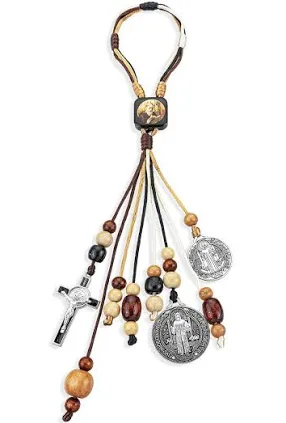
St Benedict Medal Charm to hang on the door
Creating A Altar, You need image of the saint and a candle. A statue would work as well.
First, find a space where your altar will not be disturbed. Place the image there, with the candle in front of it. Meditate and pray get to know him.
Offering: fresh flowers, or a glass of water on your altar.
#St Benedict#St Benedict Medal#Magic bath for a Saint#Hoodoo Saint#Protection against evil#conjure work#southern conjure#spiritual#like and/or reblog!#google search#traditional hoodoo#southern hoodoo#follow my blog
20 notes
·
View notes
Text
Exorcism Prayers for the Laity
SAINT BENEDICT MEDAL PRAYER
(2-min. read)
“𝐃𝐞𝐦𝐨𝐧𝐬 𝐡𝐚𝐯𝐞 𝐚 𝐡𝐨𝐫𝐫𝐨𝐫 𝐨𝐟 𝐭𝐡𝐞 𝐋𝐚𝐭𝐢𝐧 𝐥𝐚𝐧𝐠𝐮𝐚𝐠𝐞.” (𝐄𝐱𝐨𝐫𝐜𝐢𝐬𝐭 𝐁𝐢𝐬𝐡𝐨𝐩 𝐀𝐧𝐝𝐫𝐞𝐚 𝐆𝐞𝐦𝐦𝐚)
1 HISTORY
During a trial for witchcraft at Natternberg near the Abbey of Metten in Bavaria in the year 1647, the accused women testified that they had no power over Metten, which was under the protection of the cross. Upon investigation, a number of painted crosses, surrounded by the letters which are now found on Benedictine medals, were found on the walls of the abbey, but their meaning had been forgotten.
Finally, in an old manuscript, written in 1415, was found a picture representing St. Benedict holding in one hand a staff which ends in a cross, and a scroll in the other. On the staff and scroll were written in full the words of which the mysterious letters were the initials. Medals bearing the image of St. Benedict, a cross, and these letters began now to be struck in Germany, and soon spread over Europe. They were first approved by Benedict XIV in his briefs of 23 December 1741, and 12 March 1742.
(Catholic Encyclopedia)
2 LATIN INVOCATIONS
C. S. S. M. L. (Crux Sacra Sit Mihi Lux):
“May the Holy Cross be my light.”
N. D. S. M. D. (Non Draco Sit Mihi Dux):
“Let not the dragon be my guide.”
V. R. S. (Vade Retro Satan):
“Begone Satan!”
N. S. M. V. (Nunquam Suade Mihi Vana):
“Never tempt me with your vanities!”
S. M. Q. L. (Sunt Mala Quae Libas):
“All that pours from you is evil!”
I. V. B. (Ipse Venena Bibas):
“Drink your own poison!”
3 TESTIMONIES
Ellen
Feb 23, 2023
“I am an oblate of a Benedictine Abbey. A couple of years ago, we had a terrible tornado in our town. I prayed to St. Benedict that my home and neighborhood would not be touched and they were not. I credit the prayers of St. Benedict.”
(houseofjoppa)
Jessica Geo
April 03, 2023
“My entire family has been wearing the Saint Benedict medal since the beginning of the pandemic. My husband is a physician working at one of the busiest hospitals in New York. I have a toddler that puts everything in his mouth. We travel a lot. We never got sick, never tested positive for COVID. We pray to Saint Benedict every night. He’s protecting us.”
(houseofjoppa)
Maria
Maria, a mother of three from Italy, recalls a time of great distress in her family. "There was a palpable sense of unease in our home," she says. "Nightmares, unexplained tensions, and a general feeling of malaise were frequent." A devout Catholic, Maria turned to her faith for solace and protection. After consulting with her parish priest, she placed St. Benedict Medals in her home and on her children. "It was as if a weight was lifted," she recounts. "The atmosphere in our house changed, and my children slept peacefully again."
(laudate-mariam)
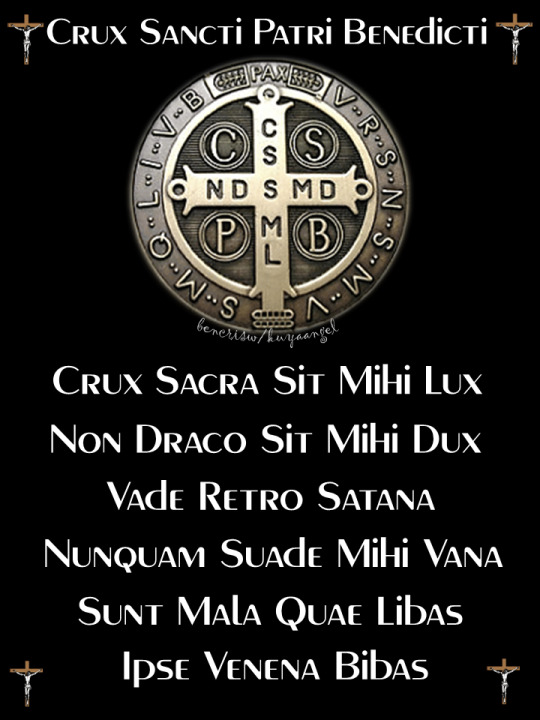
5 notes
·
View notes
Text
St. Benedict Medal - a powerful sacramental
All images from Franciscan Communications.

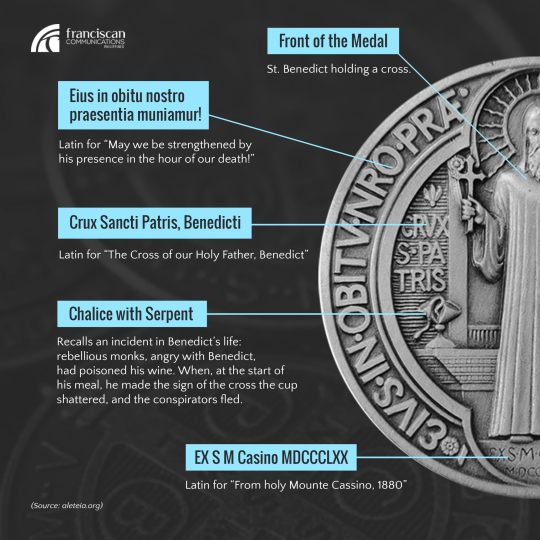



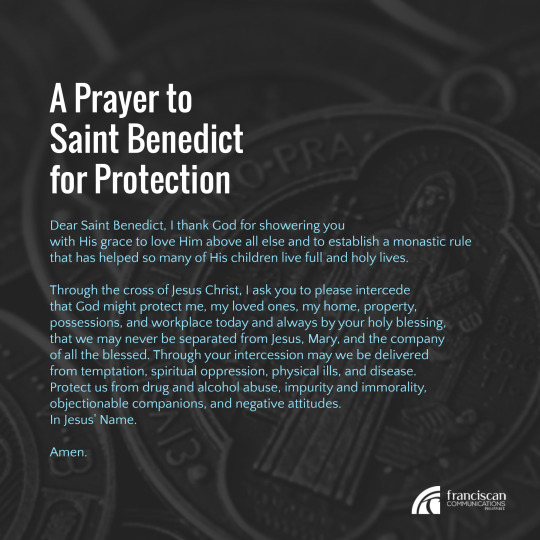
28 notes
·
View notes
Note
Do St. Benedict medals (often worn or nailed up over doorways bc St. Benny was a powerful exorcist) count as apotropaic?
Yep! That's a ward right there!
139 notes
·
View notes
Note
Hello again!
I suffer from scrupulosity too. I was diagnosed 2 years ago as soon as I turned 18 with religious OCD. If you can, I would highly recommend getting a Miraclous Medal and St. Benedict. They will help you SO much.
God bless you, you’re not alone. Jesus loves you SO much!
scrupulosity sucks doesn't it! I do wear a miraculous medal and my favorite rosary has a st benedict medal :) I also find the st benedict medal prayer to be very powerful!
God bless and I will keep you in my prayers.
5 notes
·
View notes
Note
Heya what are your thoughts on deliverance ministry?
I ask this because I recently expressed that I’d been feeling quite low and I know I have dealt with particular mental health issues for a while. My church has never said anything more about it but someone told me the other day that I may have a demonic spirit which (yano after seeing a lot of things online tends to come up every now and then lol) but it always kinda freaks me out a bit. Anyway, this person has asked to do a deliverance kind of thing for me and I do know how it’s supposed to work but I don’t know; I guess if you or anyone here has views on this I’d love to know.
Now, are we speaking about a non-Catholic deliverance ministry, a specific exorcist ministry in the Catholic Church like Fr. Ripperger’s, a Catholic Healing Mass, the charismatic movement in the Catholic Church? Or is it laity? I could give my different opinions for each listed above. And maybe you have another in mind?
For a non Catholic ones like I see on tv, I’m very skeptical, I respectfully keep away. I’m not too sure on the charismatic movement because I’ve never been a part of it but it seems to really help some people! I’ve been to many Healing Masses and they do feel pretty good. I believe evil does exist (I have experienced a lot of real spiritual attack) and exorcists can teach us a lot of what to be aware of—— not to say be afraid of turning every corner, but rather, to know why things happen and know that God is in complete control. I listen to a variety of exorcists but I have been hooked on this recently.
Did you know that there are ministries in the Catholic Church for mental health? My diocese of Phoenix has one! It’s called Office of Mental Health Ministry. You don’t have to be in Arizona to look at the page and the resources. Check it out! Our health, whether physical, mental, or spiritual, is important because our bodies are precious temples of the Holy Spirit. Yes, even on days where we feel unworthy and broken. The Holy Spirit lovessss to dwell in you. God loves you! Not all mental illnesses means demons. We just need tender love, healing, and care.
You can do little things to help combat spiritual attack. For example, pray the Rosary, keeping on hand a blessed Green Scapular, making the sign of the cross with Holy Water, sprinkling some blessed salt around your house, wearing a medal of St. Benedict or St. Michael. The sacrament of Confession is very powerful. I suggest going if you haven’t been there in a while. Turn away from things that lead to sin…. Start in baby steps at the pace you feel comfortable with.
The devil will try many ways to make you afraid, in a goal to scare you away from God and make you hurt.
Do not be afraid. You and I are soldiers of God. We are children of light, not darkness.. so together, no matter the distance, we can help each put on the armor of God which shines even in the greatest darkness. You’ll be in my prayers! ⚔️
2 notes
·
View notes
Note
Ms Tiny Catholic,
I left Christianity for a few years and fell into a ‘Wicca-witchcraft-polytheistic-blah blah- ghost contacting’ phase. Recently, I’ve found Catholicism and have been purging my belonging and habits that are related to that “witchy” phase when I find them, but I’m worried I’m not doing enough. I experienced things I can not explain and had interactions that scare me deeply now. Last night I dreamt my house was plagued by demons and woke up unwell and poorly rested. I’m not sure about most Christians, but I believe that some of the witchcraft being practiced now is real and not just aesthetic and I’ve naively let dark forces into my life. Am I just paranoid? Is there anything I can do?
Praise God that you’ve encountered His Church and are starting to orient yourself towards Him!! I had a similar experience in my conversion. In my personal opinion I think the situation could be a bit of both things (real darkness as a result of the occult, but also you psyching yourself out a little bit). I absolutely believe that (some) witchcraft is real and can invite demonic spirits in, and I can’t rule out whether or not that’s happened, but I think there’s a level of healthy paranoia and and a level of unhealthy paranoia. Here would be my suggestions! I’m going to include a list of prayers at the bottom, which are generally my favourites for demonic issues and protection from evil. Sacramentals are also a great gift of the Church and while they’re not magical talismans or anything, I find they can be very comforting, and if you have them blessed by a Priest they can help to be a protective presence. St. Benedict Medals are amazing, as well as Holy Water and/or exorcised salt. If you haven’t already, I’d also really recommend reaching out to a Priest to discuss the conversion and fears you’re having! If you’re not struggling with compulsions or scrupulosity I also find a quick Hail Mary or request for peace from the Holy Spirit can b really calming in a frightening moment.
I ask Jesus to seal me in His most Precious Blood against any and all incursions of the evil one, in particular, against any clinging, familial, familiar, or retaliating spirits, in the name of the Father, and of the Son, and of the Holy Spirit.
I adjure all of you evil spirits, in the Name of the spotless Lamb of God, Jesus of Nazareth, to depart from here. I cast you out, every unclean spirit, every phantom, every encroachment of the devil. Yield then to God! You are vanquished in your citadel, all you vile demons. The most Sovereign Queen of Heaven, the glorious and ever Virgin Mary; her immaculate purity drives you out; before her countenance you must flee. Give way you evil spirits to the Queen of Heaven. She is destined by Almighty God to crush your head with her heel.
Almighty God, Father, Son, and Holy Spirit, most Holy Trinity, Immaculate Virgin Mary, Angels, Archangels, and Saints of Heaven, descend upon me. Please purify me Lord, mold me, fill me with Thyself, and use me. Banish all the forces of evil from me, destroy them, vanquish them, so that I do Thy Holy Will. Banish from me all spells, witchcraft, black eye, malefice, ties, maledictions, and the evil eye; diabolic infestations, oppressions, possessions all that is evil and sinful; jealousy, perfidy, envy; physical, psychological, moral, spiritual, diabolical ailments. Cast into hell all demons working these evils, that they may never again tough me or any other creature in the entire world. I command and bid all the powers who molest me, by the power of God Almighty, in the Name of Jesus Christ out Saviour, through the intercession of the Immaculate Virgin Mary, to leave me forever, and to be consigned into the everlasting hell.
May the Lord Jesus Christ be with me, that He may defend me; may He be within me, that He may conserve me; may He be before me, that He may lead me; may He be after me, so that He may guard me; may He be above me, that He may bless me, with God the Father and the Holy Spirit Who live and reign forever and ever.
Lord Jesus Christ, in Your love and mercy, pour Thy Precious Blood over me so that no demon or disembodied spirit may retaliate against me. Mary, surround me with thy mangle, blocking any retaliating spirits from having any authority over me. St. Michael, surround me with thy shield, so that no evil spirit may take revenge on me. Queen of Heaven and St. Michael, send down the legions of angels under your command to fight off any spirits that would seek to harm me. All you Saints of Heaven, impede any retaliating spirit from influencing me. Lord, Thou art the Just Judge, the avenger of the wicked, the Advocate of the Just, we beg in Thy mercy, that all we ask of Mary, the angels and the Saints of Heaven be also granted to our loved ones, those who pray for us, and their loved ones, that for Thy Glory’s sake, we may enjoy Thy perfect protection.
St. Joseph, terror of demons, cast your solemn gaze upon the devil and all his minions, and protect us with your mighty staff. You fled through the night to avoid the devil’s wicked designs. Now, with the power of God, smite the demons as they flee from you. Grant special protection, we pray, for children, fathers, families, and the dying. By God’s grace, no demon dares approach while you are near, so we beg of you, always be near to us.
St. Michael the archangel, defend us in battle; be our protections against the wickedness and snares of the devil. May God rebuke him, we humbly pray, and do thou O Prince of the Heavenly Host, by the power of God, cast into hell Satan and all the other evil spirits who prowl through the world seeking the ruin of souls.
Angel of God, my guardian dear, to whom His love entrusts me here; ever this day/night be at my side, to light and guard, to rule and gude.
God bless you anon, I hope things go well!! Praying for you.
17 notes
·
View notes
Text
The Exorcistic Significance of the St. Benedict Medal and the Enhanced Relijewels Medal
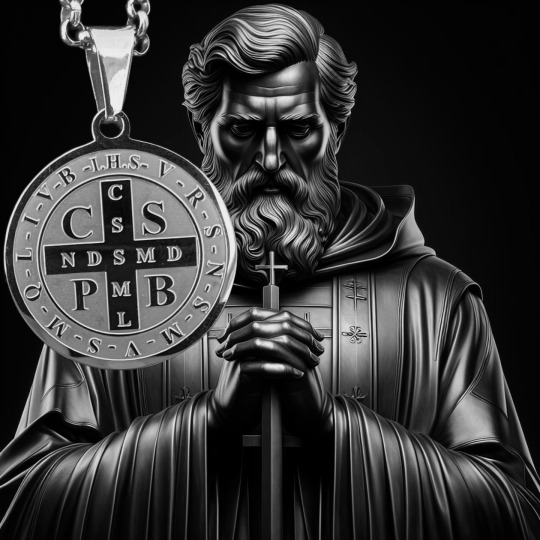
The **St. Benedict Medal** holds a significant place in the realm of spiritual warfare. It is a symbol of protection against demonic influences, embodying the power of faith as a shield against negativity and evil in all its forms.
The Power of the St. Benedict Medal
The St. Benedict Medal is renowned for its exorcistic properties. It is believed to provide protection against evil spirits and the forces of darkness. The medal carries the image of St. Benedict, who was a beacon of light in the dark ages, his life a testament to the power of faith over evil.
The reverse side of the medal carries significant inscriptions, including the initials of Latin phrases that translate to powerful prayers of exorcism. These inscriptions serve as a constant reminder of God's protection and the power of prayer.
The Enhanced Relijewels Medal
The **Relijewels Medal** takes the protective and exorcistic properties of the St. Benedict Medal to another level. This ancient medal is enhanced by the **IHS**, a Christogram representing the Holy Name of Jesus. This potent combination makes the Relijewels Medal a formidable tool against the devil and malevolent forces.
The IHS enhancement amplifies the medal's power, making it a potent symbol of faith and a shield against negativity. It serves as a constant reminder of the protective power of faith and the presence of divine assistance in the face of evil.
A Shield Against Negativity
Both the St. Benedict Medal and the enhanced Relijewels Medal serve as shields against negativity. They are not just pieces of metal but symbols of faith that carry with them a promise of divine protection. They stand as bulwarks against the malign in every form, be it fear, doubt, despair, or the forces of evil.
In conclusion, the St. Benedict Medal and the enhanced Relijewels Medal are more than just religious artifacts. They are powerful symbols of faith and divine protection, serving as constant reminders of the power of good over evil. They embody the belief that with faith, we can overcome any form of negativity or malign influence. They are indeed powerful tools in the spiritual warfare that each of us faces in our daily lives.
Go to site: www.relijewels.it
0 notes
Text
Learn About the Significance of the St. Benedict Crucifix
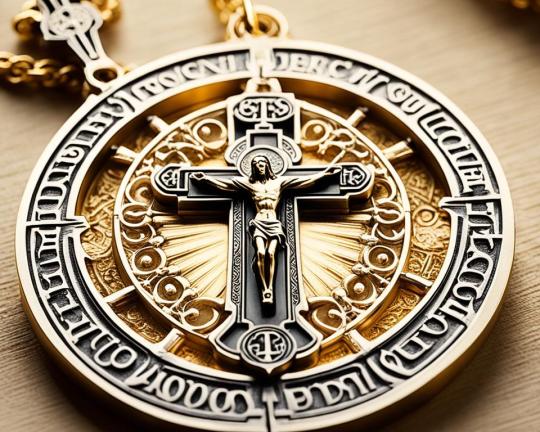
Engage with a symbol that bridges heaven and earth, providing a focal point for prayer and reflection. Whether you wear it, place it within your home, or hold it during times of spiritual need, the St. Benedict crucifix is a testament to the enduring legacy of faith that spins through the history of Christian spirituality and continues to resonate powerfully today.
Key Takeaways
The St. Benedict crucifix serves as a powerful emblem of Christian faith and a symbol of spiritual protection.
Understanding the St. Benedict crucifix meaning can enrich one's spiritual life and deepen appreciation for its role in Christianity.
The inclusion of the St. Benedict medal infuses the crucifix with additional layers of symbolic meaning and historical significance.
As an amulet, the St. Benedict crucifix is esteemed for its believed ability to ward off evil and provide a sense of peace and security.
The spiritual symbolism encapsulated in the crucifix offers a tangible connection to the rich tapestry of Christian heritage and sacred tradition.
The Origin and History of the St. Benedict Crucifix
Delving deep into the annals of Christian heritage, the st benedict crucifix emerges as a profound religious artifact, steeped in centuries of monastic traditions. Its history is inextricably linked to the life of St. Benedict of Nursia, a figure of monumental influence known as the father of Western monasticism. This section explores the rich tapestry of religious artifacts history associated with this emblem of faith.
Legend narrates that St. Benedict of Nursia, while in prayer, deflected a poisoned drink with a sign of the cross, an act representing the crucifix's early association with protection and the divine. The synthesis of the St. Benedict medal and the crucifix was a later development, embodying a more complex sacred narrative. It embodies both the aesthetics of spiritual craftsmanship and the deep reverence for a saint whose life's work was the embodiment of Christian ascetic ideals.
In the words echoed from the Monastery of Christ in the Desert, "The St. Benedict Crucifix is not merely a physical object but a symbol that spans generations, a continuity of faith from the era of St. Benedict to the present day."
The emblem of St. Benedict began its integration into Christian practice mainly through the hands of Benedictine communities. Its acceptance and dissemination are a testament to the profound respect afforded to St. Benedict’s principles of monastic life. These principles continue to influence Christian faithful around the globe, marking the crucifix as a significant piece of religious artifacts history.
The spread of the St. Benedict Crucifix through various Christian communities underscores its valued place within Christian heritage. From the wearied walls of monastic cells to the necks of believers seeking spiritual fortification, the crucifix serves as a timeless relic of monastic life and devotion.
The medal's intricate design, coupled with the cross, constitutes a rich mosaic of tradition and religious significance. The St. Benedict Crucifix, with its storied history and profound spiritual significance, continues to be a testament to the lasting legacy of St. Benedict and his contributions to Christian monasticism.
youtube
The origins of the St. Benedict Crucifix trace back to St. Benedict's miraculous works.
The association of the St. Benedict medal with the crucifix evolves as a historical blend of spirituality and art.
Monastic traditions play a crucial role in preserving and perpetuating the cross through its material and spiritual journey.
This tangible connection to the past holds not just artistic value but serves as a vital link to the living essence of the monastic tradition and the continuing impact of St. Benedict of Nursia on contemporary spirituality.
Understanding the Symbols on the St. Benedict Crucifix
At the heart of the St. Benedict crucifix is the medal, whose intricate details and inscriptions have captivated the faithful for centuries. Renowned for its rich symbolism, this religious emblem embodies a spiritual arsenal against evil and a source of divine protection. Each element on the St. Benedict medal has been meticulously crafted to convey a message of faith and deliverance.
Interpreting the St. Benedict Medal
The St. Benedict medal offers a complex interpretation that goes beyond its physical appearance. Scholars and spiritual leaders alike have pored over its design to unravel the significance of each image and symbol encapsulated on its surface. Known for being a tool of exorcism and a ward against temptation, the medal serves as a tangible expression of divine safeguarding.
The Meaning Behind the Latin Inscriptions
Circling the periphery of the St. Benedict medal are Latin inscriptions that are not just decorative but hold profound meaning. These phrases are said to capture the essence of St. Benedict's guiding principles, encapsulating the core of monastic life and the universal battle between good and evil. Understanding these Latin inscriptions opens a window into the spiritual legacy that the medal represents.
The Cross: A Blend of Exorcism and Protection
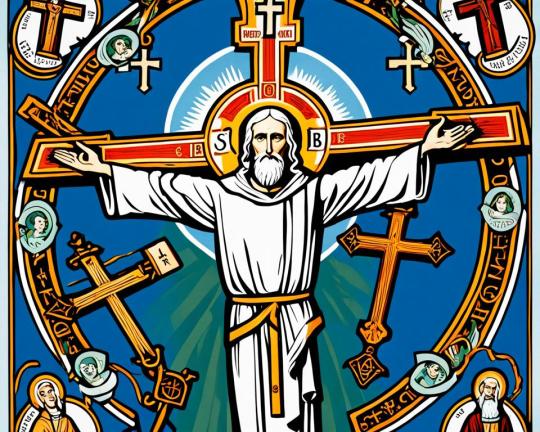
In the table below, we elucidate the symbols and their associated meanings found on the St. Benedict medal. By breaking down these elements, we further our comprehension of this celebrated religious artifact and its role within Christian tradition.Symbol/InscriptionMeaningC.S.S.M.L.The initials of the Latin words "Crux sacra sit mihi lux," translated as "The Holy Cross be my light."N.D.S.M.D.Stands for "Non Draco Sit Mihi Dux," meaning "Let not the dragon be my guide."C.S.P.B.Is the acronym for "Crux Sancti Patris Benedicti," or "The Cross of [our] Holy Father Benedict."V.R.S.Refers to "Vade Retro, Satana," meaning "Begone, Satan," emphasizing the exorcism aspect of the medal.N.S.M.V.Represents "Non Suade Mihi Vana," which translates to "Do not persuade me to do vain things."S.M.Q.L.Stands for "Sunt Mala Quae Libas," meaning "What you offer is evil."I.V.B.Signifies "Ipse Venena Bibas," essentially stating "Drink the poison yourself," again underlining the protective symbolism of the medal against malevolence.
Grasping the language of these religious protection emblems and their connotations equips us with the ability to appreciate why the St. Benedict medal is held in such high esteem among those who seek spiritual fortitude.
How the St. Benedict Crucifix is Used in Modern Spirituality
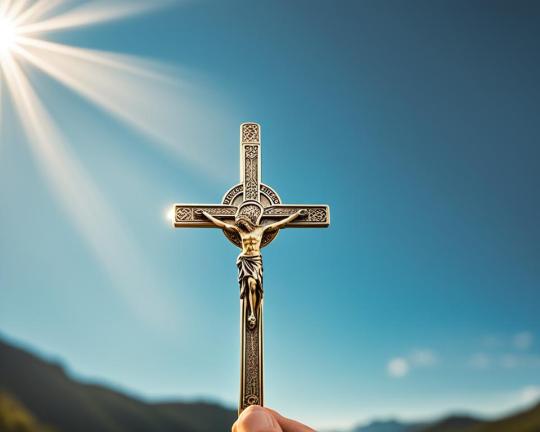
Within households, the St. Benedict Crucifix is more than a decorative piece; it serves as a declaration of faith and a source of spiritual solace. Many find that placing the crucifix in living rooms or bedrooms provides a constant reminder of their spiritual commitments and God's presence in their personal space.
Professionals have also introduced the crucifix into their workplaces, acknowledging spirituality's role in ethical decision-making and stress management. In spaces where secular and sacred often intersect, the St. Benedict Crucifix acts as a silent counselor, encouraging values such as integrity and compassion.
For individual devotion, this crucifix has remained a staple in private meditation and prayer practices. It is not uncommon to witness the St. Benedict Crucifix clasped in the hands of believers seeking peace and guidance, or worn as a pendant during times of personal reflection and spiritual warfare.EnvironmentSignificanceCommon PracticesHomeSymbolizes faith and protectionDisplay in communal areas, prayer cornersWorkEncourages ethical behaviorDesk ornament or personal accessoryPersonal DevotionAids in meditation and prayerUsed as a tactile aid during prayer
The relevance of the St. Benedict Crucifix in modern life is a testament to the adaptability of faith symbols. Its presence in various aspects of daily life reveals the human desire to connect deeply with transcendent truths, making it a veritable cornerstone of religious practices in an ever-evolving spiritual landscape.
The St. Benedict Crucifix: A Tool for Spiritual Warfare
In the realm of spiritual warfare, the St. Benedict Crucifix stands out as a powerful symbol of faith and protection. Believers from various Christian traditions have turned to this sacred emblem in their quest for security against the forces of evil. Below, we delve into the amulet aspect of the crucifix, its interdenominational significance, and share moving testimonies of miracles attributed to its presence.
Defending Against Evil: The Amulet Aspect
Throughout history, the St. Benedict Crucifix has been revered as a protection amulet. Its design, imbued with Benedictine symbolism, is not only a reminder of Christ's sacrifice but also serves as a shield against malevolent influences. It's a testament to the enduring belief in sacred objects’ power to provide sanctuary from dark entities and harmful energies.
Spiritual Significance in Different Christian Denominations
The crucifix's value as a bastion against spiritual assaults transcends denominational lines, exemplifying interdenominational Christian significance. Its use is widespread, from Catholic to Orthodox, and even among various Protestant communities. In each tradition, the St. Benedict Crucifix is cherished for its perceived potency and profound theological resonance.
Stories of Protection and Miracles Associated with the Crucifix
Accounts of individuals shielded from harm during natural disasters.
Testimonies of healing attributed to the presence of the crucifix.
Stories of conversion experiences stemming from encounters with the emblem.
Each story contributes to the tapestry of testimonies of miracles surrounding the St. Benedict Crucifix. These narratives strengthen the conviction of its spiritual authority and the hope it embodies for countless faithful.
Incorporating the St. Benedict Crucifix into Daily Life
The St. Benedict Crucifix is more than a symbol; it's a call to live a faith-filled life, infusing religious symbolism into every part of our daily routines. Whether it's through daily devotion, decoration, as a personal accesory, or education, this emblem of faith serves as a tangible expression of our spiritual commitments.
Daily Devotion: A consistent personal prayer practice is central to a spiritually nourishing life. Having the crucifix in your space serves as a physical reminder of your faith and can become an anchor for your daily devotionals. It could be a moment of prayer before it as you start your day or a brief reflection on its meaning at night.
Religious Symbolism: Within your home or work environment, the St. Benedict Crucifix can be a source of solace and inspiration. Displayed prominently, it can be a testament to your beliefs and an object that radiates a sense of protection and peace. It represents the continuity of religious values amidst the rush of daily chores and responsibilities.
Education: Introducing the St. Benedict Crucifix to those new to the faith, including children and converts, offers a rich opportunity for teaching. By explaining its symbolism and history, you're providing a foundation upon which they can build their own understanding and appreciation for the traditions of the faith.
Placing the crucifix in common areas to promote faith discussions
Using it as part of faith education programs
Gift-giving to reinforce the importance of spiritual growth and support
Embedding the St. Benedict Crucifix in our lives is a practice that strengthens the fabric of our daily experiences, fostering a continuous connection with our spirituality.
Guidelines for Properly Venerating and Displaying the St. Benedict Crucifix
For those who hold the St. Benedict crucifix in high regard, understanding and following the correct protocols for its veneration are central to honoring this sacred symbol. Proper care, handling, and positioning are integral to maintaining the sanctity of the crucifix, ensuring it serves its purpose within your spiritual journey. Whether you're a seasoned devotee or new to the tradition, this guide will provide you with essential tips on venerating religious items, adhering to crucifix display etiquette, and engaging in sacred object consecration and blessing rituals.
The Do's and Don'ts of Handling the Sacred Item
When handling the St. Benedict crucifix, it is crucial to act with reverence and care. Always clean your hands before touching the crucifix to prevent degradation of its materials. It's advisable to avoid placing it in areas where it might be disregarded or disrespected. Remember, the crucifix isn't just a decorative piece; it is a visual form of prayer and reflection. Therefore, regular maintenance, including gentle cleaning with a soft cloth, ensures that your sacred item remains in a condition befitting its significance.
Where to Place the Crucifix for Optimal Spiritual Benefit
Choosing the right location for your St. Benedict crucifix can enhance its spiritual benefits. Ideally, position the crucifix in a central place within your home, like a prayer room or the main living area, where it can be a focal point of faith and reflection. In a workspace, a discreet yet visible spot can serve as a gentle reminder of your spiritual foundation. Placement should be done thoughtfully, considering the crucifix's role in providing protection and invoking peace within its environment.
Consecration and Blessing Practices
Consecration and blessing practices amplify the spiritual significance of the St. Benedict crucifix. It is advisable to have the crucifix blessed by a clergy member, as sanctioned by resources like the U.S. Conference of Catholic Bishops. This act of sanctification prepares the item to be a vessel of faith and a shield against evil. Participating in blessing rituals can deepen your connection to the emblem's history and enhance its protective qualities. Regular participation in these rituals, as outlined by trusted Catholic educators and traditions, reaffirms the crucifix's role in your spiritual life.
0 notes
Text
Power of the St. Benedict Medal
TESTIMONIALS
The St. Benedict medal is one of the most famous medals in the church. It commemorates St Benedict working miracles through The Sign of the Cross. The actual blessing formula that the priest uses, when blessing the medal contains an exorcism, a prayer for protection and a prayer for healing for the sick as well. There are also initials on the medal which stand for various prayers against the work of the devil.
THE UNDESIRABLE TENANTS
Therese lived next door to a rental house. Three successive groups of tenants lived in the house. The tenants in each of the three groups were drug addicts. They usually slept all day and stayed up all night disturbing the neighbours with their noisy rowdy parties. The third group of tenants skipped through without paying the rent. Therese's mother then placed a blessed St. Benedict medal in the foundation of the rental house. From that time onward the tenants who rented the house were much quieter people.
THE NOISY NEIGHBOURS
In a similar incident to the previous one, Therese's mother placed a St. Benedict Medal in the foundations of a rental house across the road from her own home. The tenants in this house used to blast the neighbourhood with unbearably loud music. After the St. Benedict Medal was placed in the foundations, the tenants moved out and quiet peaceful tenants moved into the house.
ST. BENEDICT MEDAL AT THE SUPERMARKET
Every Friday night my husband and I went to the supermarket to buy our weekly groceries. The supermarket played on the loudspeaker a heavy metal rock radio station. This caused me to develop headaches during the shopping excursions.
After many weeks of this I came up with the idea of placing a tiny, blessed St. Benedict medal behind the cans of food. The next Friday when we went to the supermarket to shop the supermarket staff had changed the radio station to a much more pleasant music channel.
ST. BENEDICT MEDAL IN THE PARK
A friend of our family lived near a park. For many years hoodlums congregated in the park at night. All kinds of unacceptable behaviour took place. The police were called repeatedly over a number of years. They were never successful in improving the situation. Finally, our friend placed a blessed St Benedict medal under one of the park benches. From that day on the hoodlums never returned.
Source: missionbell.homestead
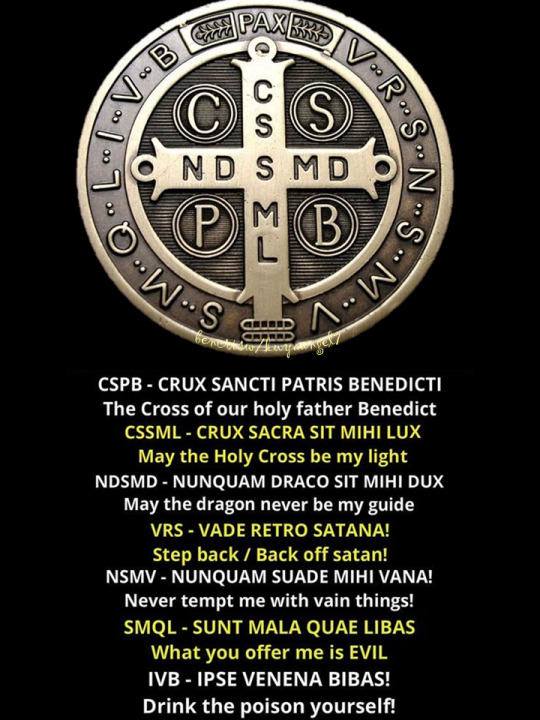
0 notes
Note
Do you know of any folk traditions concerning Saint Benedict? Some negative entities slipped through my wards and I used his medal and prayer to banish them. I immediately saw two dark specks out of the corner of my eye fly out the window. I always sensed that his medal was powerful and I was wondering if you knew anything more about it?
Hi Anon,
I know that some people add his medal to their bucket of water when mopping the floor, or cleaning windows and doors. You know, as an extra layer. Which can be a tremendous help. The medal itself is quite interesting and useful! If there are any folk traditions/customs with St Benedict and his medal, I do not know them beyond what I mentioned above. However that doesn't mean there aren't any!
Was it on Pinterest? I think it was! I saw that someone made kind of a 'chunky' version of a rosary. Well, 'rosary', like a large bracelet, with wooden beads, and his medal. And she anointed the beads with some kind of oil, so it smelled nice. And you coule hang it on the doorhandle of any door in the house. Which was an nice idea!
Anyway, that is me rambling. Hope this helps you.
Take care!
- Toverij & Spokerij
46 notes
·
View notes
Text
A SIMPLE WAY TO SPIRITUALLY CLEANSE A HOME
Physically clean your home and make it free of clutter. This is very important as it allows the energy to flow through your home easily. Also remember that this is only part of the solution. You must keep the energy positive in your home. Light, love and laughter, soft music and comedies, and no unnecessary drama are all helpful. When you are ready, these are your next steps.
Light a white candle in a central part of your home, to represent God's presence there. Get some Palo Santo, blessed dragon’s blood incense or white sage and smudge your home, in every corner, drawer, and closet, telling the entities to be gone by the power of God as your faith sees Him, Her or Them. You must be intent and focused on what you are doing, and believe that this will work. Your faith is vitally important. Then take holy oil and place a mark over every door and window, to seal your home from their return. Then move on to the next room and repeat. When you are done, encircle the home with blessed salt and if you believe in saints, bury a St. Benedict medal at the four corners of the house.
For more information or any questions find us here 👇
The Warren Legacy Foundation Facebook page 👇 https://www.facebook.com/warrenlegacyfoundation/
Find us on Twitter here 👇https://twitter.com/FilesWarren
Also find us on Instagram here 👇https://www.instagram.com/warrenfiles/
#psychic#ghost hunting#paranormal#spirits#sagesmudge#sageburning#sage#ed and lorraine warren#the warren files#the warren legacy foundation for paranormal research#cleansing#protection#advice
4 notes
·
View notes
Photo
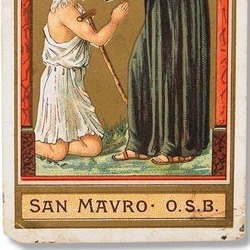
Story of St. Maurus - Feast Day - January 15th - Latin Calendar
Life of St. Maurus (Maur) (Order of St. Benedict)
St. Maurus, abbot and deacon, son of Equitius, a nobleman of Rome, was born about the year 510 and died in 584. When he was about twelve years old, his father placed him under the care of St. Benedict at Subiaco, to be educated in piety and learning. When he had grown up, St. Benedict chose him as his coadjutor in the government of the monastery. He was a model of perfection to all his brethren, but especially in the virtue of obedience.
St. Placid, one of his fellow disciples, the son of the senator Tertullus, going one day to draw water, fell into the lake, and was at once carried away by the current. St. Benedict saw this in spirit in his cell and bade Maurus run and draw him out. Having asked and received the holy Father's blessing, Maurus hastened down to the lake, walked upon the waters, thinking he was on dry land, and dragged Placid out by the hair, without sinking in the least himself. He attributed the miracle to the command and prayers of St. Benedict; but the holy abbot, to the obedience of the disciple.
St. Maurus was sent to France in 543 to propagate the order of St. Benedict in that country. He founded the famous abbey of Glanfeuil, over which he ruled as abbot for thirty-eight years. In 581 he resigned the abbacy, built for himself a small cell near the church of St. Martin, so that in solitude and prayer he might prepare himself for his passage into eternity. After two years he fell sick sof a fever: he received the sacraments of the Church, lying on sackcloth before the altar of St. Martin, and in that posture expired on January 15, 584.
Gift of Miracles
St. Maurus was favored by God with the gift of miracles. To show in what high degree the Saint possessed the gift of miracles, it will be sufficient to cite a few examples of how he miraculously cured the sick and restored to health those who were stricken with a grievous affliction. It has already been stated, according to the testimony of Pope St. Gregory the Great, in the Second Book of his Dialogues, how when a youth, St.Maurus rescued St. Placid from drowning.
A few more examples of miracles wrought by the Saint, as related by the monk St. Faustus (Bollandists, Vol. 2), who accompanied St. Maurus to France and later wrote his life, will be given here. They were invariably wrought by means of the sign of the Cross, and the relic of the true Cross, which he had taken along to France.
When St. Maurus, at that time prior of the abbey of Monte Cassino, was returning with the brethren from gathering the harvest in the fields, he met a boy who was mute and crippled, accompanied by his parents. When the father and mother of the boy cast themselves at the feet of the Saint and implored him to cure their child of his maladies, St. Maurus, having for some time given himself to prayer, imposed upon the head of the boy his levitical stole, for he was a deacon, and made the sign of the Cross over him, saying to him: "In the name of the most holy and undivided Trinity, and supported by the merits of the-most holy Father Benedict, I bid you to rise, stand upon your feet and be cured." And forthwith the boy arose, walked about, and with a loud voice praised and glorified God.
A certain Vicar, Ardenard, had been sent by Innocent, the Bishop of Mans, to Monte Cassino, in order to petition St. Benedict to send some monks to France. Arriving at a place called Vercella, the Vicar fell down headlong from a high stairway in the place where he was lodging. His body was so crushed by the fall that his life was despaired of. His right shoulder, arm and hand had so swelled with inflammation, that amputation of the arm was deemed necessary. Recourse was then had to their companion, St. Maurus, who was engaged in prayer in the oratory. Moved by the earnest supplications of his brethren, and the misery of the sick man, the Saint cast himself prostrate at the foot of the altar, pouring forth his soul in fervent prayer. Having finished praying, he took from the altar the case of relics which had been sent him by his master, St. Benedict, and went to the bedside of the sick man. Having exposed the relic of the Cross, he made the sign of the Cross over every part of the arm from the shoulder to the fingers, saying:
"O God, the Creator of all things, You ordained that Your only Son should take flesh of the Virgin Mary by the power of the Holy Spirit for the restoration of your people, and You deigned to heal the wounds and infirmities of our souls by the redemption accomplished upon the sacred and glorious wood of the life-giving Cross: do You also vouchsafe through this powerful sign to restore health to Your servant."
His prayer being ended, all the poisoned blood, by which the Vicar's arm had beer inflamed, began to flow off from three different places in his arm, and his arm was cured.
While continuing their journey and reaching the Alps, one of the servants, Sergius, riding on horseback, fell from his horse and struck his leg against a huge rock, and so crushed it that it was but one bruised mass. Whereupon St. Maurus went up to the unfortunate man, seized his crushed leg with his left hand, and with his right made the sign of the Cross over it, saying: "In the name of almighty God, arise and be cured," and immediately, to the joy of all, his crushed leg became whole and sound.
When St. Maurus and his little band came to the church of the holy martyrs Sts. Maurice and his companions, they entered it to pray. At the entrance of the church sat a certain man who was born blind, begging alms from those who entered and left the edifice. He had learned that Maurus, the disciple of the holy man Benedict, had arrived, the fame of his sanctity having already preceded him. When Maurus and his companions had finished their prayers and left the church, they found the blind man lying prostrate on the ground, begging and imploring the Saint to obtain for him by his prayers the light of his eyes. Maurus commanded him to rise, and pressing the fingers of his right hand upon his eyes, he imprinted on them the sign of our redemption. Thereupon the blind man instantly obtained his eyesight.
Maur Rescues Placid
Since St. Maurus miraculously freed many persons from their bodily afflictions through the sign of the Cross and the relic of the true Cross of Christ, in many monasteries of the Order of St. Benedict from time immemorial, after the example of this miracle-worker, the custom of blessing the sick with the relic of the true Cross, has prevailed, in order to restore their health. But until recent years, there was no uniform and approved formula of blessing of the Church. There existed a number of old and new formulas, which were essentially the same, but differed from each other in many details. Some formulas were exceedingly lengthy. In the face of these facts, the Rt. Rev. Dom Maurus Wolter OSB, President of the Beuronese Congregation, petitioned Rome for an approved and authentic formula. A carefully prepared and much abbreviated formula was therefore presented to the Sacred Congregation of Rites for its approval.
This formula was approved by the Sacred Congregation for all priests and deacons, secular as well as regular clerics, to impart the blessing, provided the formula approved by the Sacred Congregation is used.
Nihil obstat: John Eidenschink, OSB JCD, Censor deputatus. Imprimatur: + Peter W. Bartholome, DD, Bishop of St. Cloud, March 3, 1963.
The Blessing of Saint Maurus over the Sick
with a Relic of the True Cross or the Medal of Saint Benedict

Since it is frequently impossible to have a relic of the True Cross, the Sacred Congregation of Rites granted on 6 March 1959, at the request of Benno Cardinal Gut OSB, then Abbot Primate of the Order of St. Benedict, the permission to use the medal of St. Benedict in place of the relic of the True Cross to confer the Blessing of St. Maurus with the approved form as given below.
Efficacy of the Blessing
The blessing of Saint Maurus has its efficacy through the power of the sign of the Cross, the veneration of the relic of the true Cross of our Redeemer, the intercession of the Blessed Virgin Mary, St. Benedict and St. Maurus, and the blessing of the Church. Innumerable facts attest that where the blessing of St. Maurus has been received with a lively faith, sincere contrition, and firm confidence in God, persons have been relieved of their bodily ills, sicknesses have been cured, and evident miracles have been wrought.
Form of the Blessing
Before the blessing is imparted, the relic of the true Cross of our Lord or the medal of St. Benedict is exposed, at least two candles having been lit. Acts of contrition and firm confidence should then be excited in the sick person, so that through the merits and intercession of St. Benedict and St. Maurus, if it should please God, health may be obtained. Three Our Fathers, Hail Marys and Glory be's are recited in honor of the Blessed Trinity. Then a priest or deacon, having put on a stole, and with his right hand holding up the relic or the medal of St. Benedict before the sick person, says the following prayers:
V. Benediction and glory, and wisdom, and thanksgiving, honor and power and strength to our God forever and ever.
R. Amen.
V. My foot has stood in the direct way.
R. In the churches I will bless You, O Lord.
Invocation
Through the invocation of the most holy name of the Lord may that faith, in which St. Maurus, by employing the words that follow, healed the sick, and in which I, though an unworthy sinner, utter the selfsame words, restore your health as you desire:
In the name of the most holy and undivided Trinity and supported by the merits of the most holy Father Benedict, I bid you, N., to rise, stand upon your feet and be cured, in the name of the Father and of the Son + and of the Holy Spirit.
R. Amen.
Antiphon. Surely He has borne our infirmities and carried our sorrows: by His bruises we are healed.
V. He that forgives the iniquities of his creatures.
R. May He heal your infirmities.
V. O Lord, hear my prayer.
R. And let my cry come to You.
V. The Lord be with you.
R. And with your spirit.
Let us pray
O God, the Creator, of all things, You ordained that Your only Son should take flesh of the Virgin Mary by the power of the Holy Spirit for the restoration of your people and You deigned to heal the wounds and infirmities of our souls by the redemption accomplished upon the sacred and glorious wood of the life-giving Cross: do You also vouchsafe through this powerful sign to restore health to Your servant N.
Through the same Christ our Lord.
R. Amen.
Let us pray
Lord Jesus Christ, You conferred upon the master, blessed Benedict, the privilege of obtaining from You whatsoever he might ask in Your name: vouchsafe, through his intercession, to heal all the infirmities of this Your servant: in order that, being restored to health, he (she) may give thanks to Your holy name.
You live and reign with the Father and the Holy Spirit for ever and ever.
R. Amen.
The Blessing
Through the invocation of the Immaculate Mother of God and ever Virgin Mary, and the intercession of Saints Benedict and Maurus, may the Power + of God the Father, the Wisdom + of God the Son, and the Strength + of the Holy Spirit free you from your infirmities. Amen.
May God's holy will be done, and may it be done to you as you wish and pray, for the praise and honor of the most holy Cross of our Lord Jesus Christ.
The priest then blesses the sick person with the relic of the Cross or the medal of St. Benedict saying:
May the blessing of Almighty God, of the Father and of the Son + and of the Holy Spirit descend upon you and abide with you forever.
R. Amen.
The sick person then kisses the relic or the medal of St. Benedict.
This blessing, if need be, may be repeated three times; also three votive Masses may be celebrated, namely in honor of the Passion, of St. Maurus, Abbot, and for the Poor Souls; otherwise the fifteen decades of the Rosary of the Blessed Virgin Mary are to be prayed according to the aforesaid intentions by the sick person, or by others in the person's name.
Devotion to the Cross
The cross of Christ is the symbol of our redemption. By His death on the Cross, Christ redeemed the world and procured for us all blessings. We need not then be surprised to find among the Apostles a great love and veneration for the Cross. St. Paul says: "With Christ I am nailed to the Cross" (Gal. 2:19). And again: "God forbid that I should glory, save in the Cross of our Lord Jesus Christ, by whom the world is crucified to me, and I to the world" (Gal. 6:14).
This reverence for the Cross was passed on by the Apostles to the early Christians, for whom the Cross of our Savior was the special object of devotion. They carved it on their tombs, marked it on their houses, imprinted it on their clothing, and on household articles. They signed themselves with the sign of the Cross on coming and going, before beginning any work and upon ending it, and in all trials and dangers. They expected to obtain through the instrument of our redemption every blessing from God, especially protection against the assaults of the devil and all dangers of body and soul.
As the Cross of our Lord Jesus Christ was the chief object of devotion among the early Christians, so it was also with St. Benedict, the Patriarch of Western monasticism, and his disciples. St. Benedict often used the sign of the Cross to work miracles and to overcome the devil and his temptations; and it was this devotion of the Saint to the Cross that gave rise to the Cross or Medal of St. Benedict. The sons of St. Benedict have inherited this veneration and love of the Cross from their spiritual Father. We see this especially exemplified in the life of St. Maurus, a disciple of St. Benedict, who cherished a great devotion to the Cross of Christ, and who employed it as powerful means for curing the sick.
Nihil obstat: John Eidenschink, OSB JCD, Censor deputatus. Imprimatur: + Peter W. Bartholome, DD, Bishop of St. Cloud, March 3, 1963. HTML version: Tom Gillespie OSB; graphic: Placid Stuckenschneider OSB. Copyright 1963 by The Order of St. Benedict, Collegeville, Minnesota.
6 notes
·
View notes
